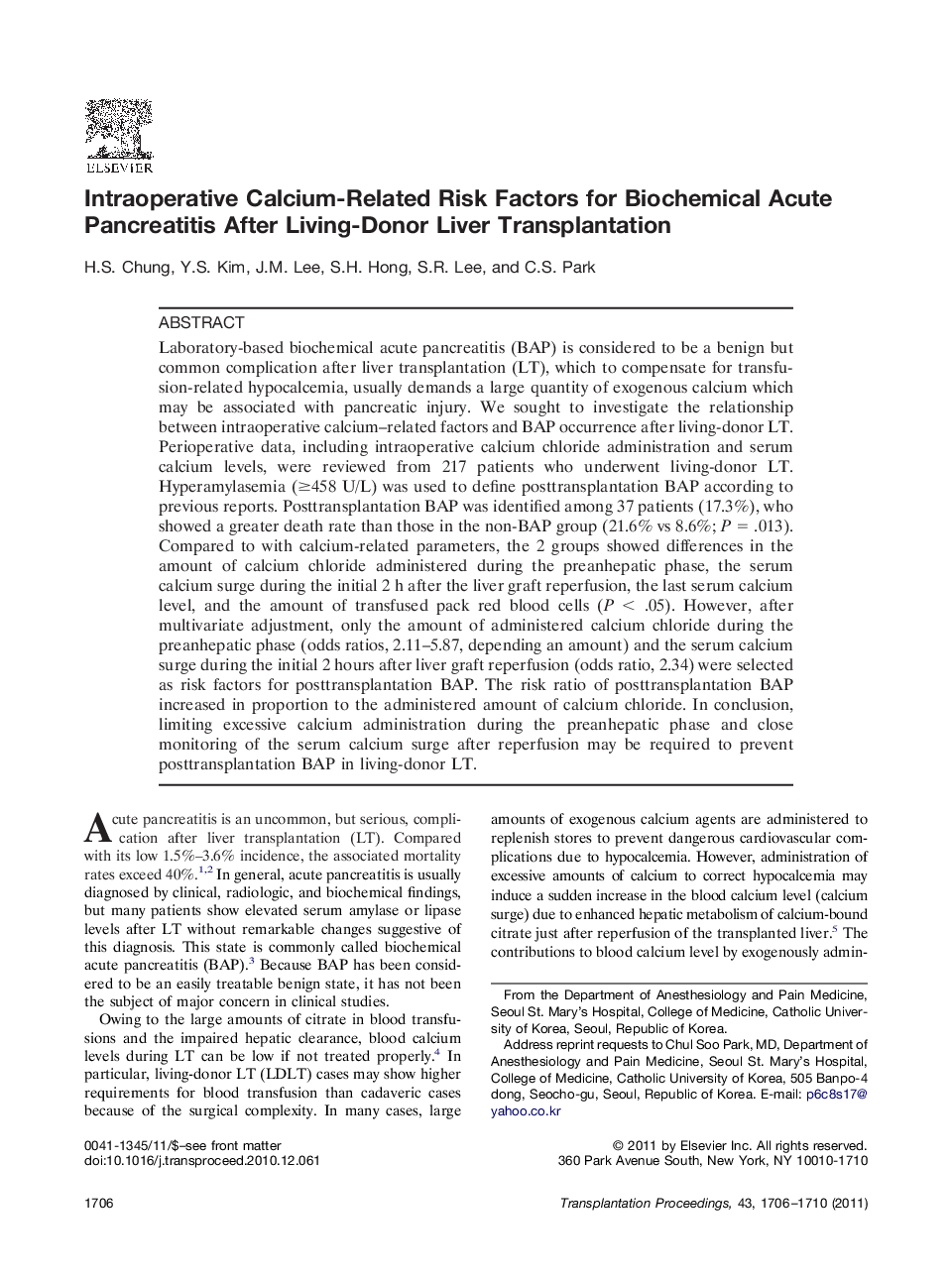| Article ID | Journal | Published Year | Pages | File Type |
|---|---|---|---|---|
| 6249293 | Transplantation Proceedings | 2011 | 5 Pages |
Laboratory-based biochemical acute pancreatitis (BAP) is considered to be a benign but common complication after liver transplantation (LT), which to compensate for transfusion-related hypocalcemia, usually demands a large quantity of exogenous calcium which may be associated with pancreatic injury. We sought to investigate the relationship between intraoperative calcium-related factors and BAP occurrence after living-donor LT. Perioperative data, including intraoperative calcium chloride administration and serum calcium levels, were reviewed from 217 patients who underwent living-donor LT. Hyperamylasemia (â¥458 U/L) was used to define posttransplantation BAP according to previous reports. Posttransplantation BAP was identified among 37 patients (17.3%), who showed a greater death rate than those in the non-BAP group (21.6% vs 8.6%; P = .013). Compared to with calcium-related parameters, the 2 groups showed differences in the amount of calcium chloride administered during the preanhepatic phase, the serum calcium surge during the initial 2 h after the liver graft reperfusion, the last serum calcium level, and the amount of transfused pack red blood cells (P < .05). However, after multivariate adjustment, only the amount of administered calcium chloride during the preanhepatic phase (odds ratios, 2.11-5.87, depending an amount) and the serum calcium surge during the initial 2 hours after liver graft reperfusion (odds ratio, 2.34) were selected as risk factors for posttransplantation BAP. The risk ratio of posttransplantation BAP increased in proportion to the administered amount of calcium chloride. In conclusion, limiting excessive calcium administration during the preanhepatic phase and close monitoring of the serum calcium surge after reperfusion may be required to prevent posttransplantation BAP in living-donor LT.
